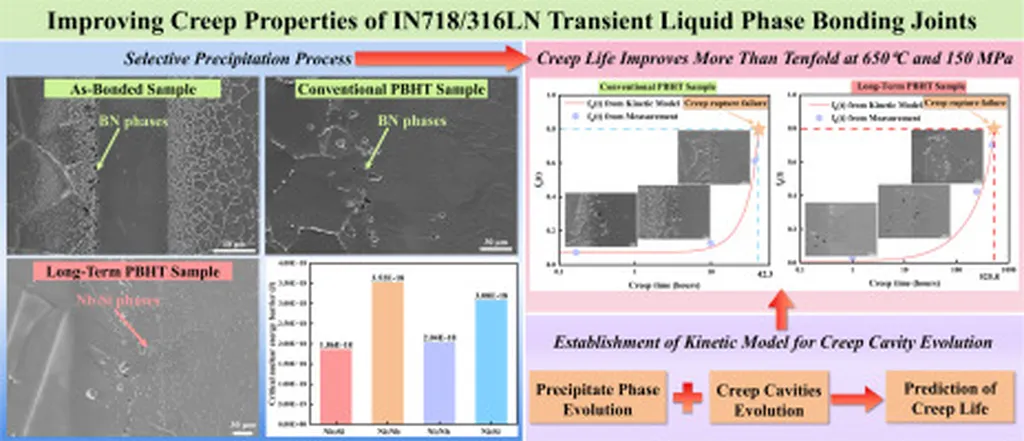In the high-stakes world of energy sector construction, the ability to join dissimilar materials is a critical challenge. A recent study published in the *Journal of Advanced Joining Processes* (formerly known as the *Journal of Advanced Joining Processes*) offers promising insights into this very issue. Researchers, led by A. Yarmou Shamsabadi from the Department of Ceramic at the Materials and Energy Research Center in Karaj, Iran, have explored the use of Transient Liquid Phase (TLP) bonding to join two commonly used superalloys, X-45 and Hastelloy X, using BNi-2 filler metal. The findings could have significant implications for the energy sector, particularly in high-temperature applications.
The study focused on the microstructural evolution and mechanical behaviors of the joint formed by TLP bonding at 1050 °C for varying durations, ranging from 5 to 60 minutes. The researchers observed that longer holding times at this temperature led to the completion of isothermal solidification and the elimination of the eutectic structure from the Athermally Solidified Zone (ASZ). This process is crucial for enhancing the mechanical properties of the joint.
“The diffusion of Melting Point Depressant (MPD) elements into the base materials plays a pivotal role in the microstructural evolution,” explained Shamsabadi. “We found that the MPD elements exhibited varying diffusion rates across the joint’s two sides, leading to differences in precipitate density and hardness.”
The study also revealed that the increased density of precipitates and broader precipitation zone on the Hastelloy X side promoted crack propagation along the boride-rich grain boundaries in this region, ultimately leading to the final fracture. This insight is particularly valuable for understanding the mechanical behaviors of dissimilar joints in high-temperature environments.
To analyze the connection between microstructure and mechanical properties, the researchers utilized a combination of microhardness and shear testing. Shear tests revealed two distinct types of fractures for joints formed over different durations. One type occurred when isothermal solidification was not completed, resulting in a cleavage fracture with low shear strength and weak bonding due to brittle eutectic compounds in the ASZ. The other type happened when isothermal solidification was complete, showing ductile fracture from the Diffusion Affected Zone (DAZ) that had the highest hardness following ASZ removal.
“This research provides a deeper understanding of the microstructural and mechanical behaviors of dissimilar joints formed by TLP bonding,” said Shamsabadi. “It offers valuable insights for optimizing the bonding process and enhancing the performance of high-temperature components in the energy sector.”
The findings of this study could shape future developments in the field of dissimilar joining, particularly in the energy sector where high-temperature applications are prevalent. By optimizing the TLP bonding process, engineers can enhance the performance and longevity of critical components, ultimately leading to more efficient and reliable energy systems.
As the energy sector continues to evolve, the ability to join dissimilar materials effectively will be increasingly important. This research represents a significant step forward in this area, offering valuable insights and practical applications for engineers and researchers alike.

